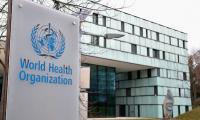Karachi, Pakistan’s largest city and one of the most populous in the world with over 25 million residents, faces critical environmental challenges. It ranks among the least green megacities globally, with less than 0.5 per cent tree canopy coverage, significantly below the global urban average of 10-20 per cent. This lack of urban greenery exacerbates climate risks, poor air quality, and the city’s overall livability, making it imperative to adopt transformative measures for a greener, more sustainable Karachi.
Karachi’s environmental challenges are stark. Pakistan’s overall forest coverage is just 4.8 per cent, and Sindh lags further behind at 2.5 per cent, which includes mangroves and riverine forests. Karachi, however, has a critically low green cover, leaving its urban landscape barren and vulnerable to extreme weather events, rising temperatures, and pollution.
The city’s air quality ranks among the worst in the world, frequently breaching safe levels of particulate matter (PM2.5) as defined by the World Health Organization (WHO). High levels of industrial emissions, vehicular pollution and unregulated construction contribute to respiratory diseases, cardiovascular issues and other public health crises. Residents suffer daily under a haze of pollutants, with few green spaces to act as natural air purifiers.
The 2022 floods devastated Sindh, including Karachi, resulting in over $15 billion in damages and losses. Karachi’s inadequate drainage infrastructure, coupled with climate change-induced extreme rainfall that happens around once in four to five years, turns its roads into rivers and displaces thousands. Rising sea levels, heatwaves, and water scarcity compound these risks, emphasising the urgent need for climate resilience and environmental action.
A dual-purpose initiative integrating large-scale plantation and solar energy generation offers a transformative solution to Karachi’s pressing environmental and energy challenges. This approach improves urban greenery and addresses the city’s energy needs at affordable costs while creating revenue streams through green financing and carbon credits.
Sindh’s Delta Blue Carbon Project near Keti Bandar provides an excellent model for this endeavour. As the world’s largest mangrove restoration program, it has successfully rehabilitated 350,000 hectares of degraded mangroves, generating $40 million in revenue through carbon credits while improving biodiversity, protecting coastlines, and enhancing local livelihoods.
Karachi can replicate and scale this success for urban and peri-urban settings. Native, drought-resistant trees should be planted in parks, green belts, degraded lands like Malir and Gadap, and along highways. These plantations will mitigate the urban heat island effect, improve air quality, and reduce urban flooding. Meanwhile, expanding mangroves near Korangi Creek and Port Qasim can combat coastal erosion, enhance marine biodiversity, and generate blue carbon credits through carbon sequestration.
Solar energy presents another viable solution. Transitioning government facilities, industrial zones, and utilities to solar power can reduce dependence on fossil fuels, lower greenhouse gas emissions, and significantly cut energy costs. Municipal buildings, streetlights, and public offices, including the Karachi Water and Sewerage Corporation (KWSC) pumping stations and sewerage network, can be solarised.
Similarly, solar farms near industrial hubs like Korangi, SITE, Bin Qasim, and other areas can provide affordable, clean energy to businesses. This ambitious project should be implemented under a public-private partnership model, similar to Sindh’s successes with projects like Thar Coal and Malir Expressway. Sindh has demonstrated significant expertise in managing such partnerships, ensuring efficiency, accountability, and shared benefits. Engaging private industries that benefit from reduced energy costs and environmental restoration will ensure the long-term sustainability of the initiative.
Two key initiatives will be required from the provincial government of Sindh, which should take leadership of this project. First, it needs to develop appropriate capacity within the Provincial Planning & Development Department to obtain concessional green finance for this unique and transformational project. Accessing global climate funds and concessional financing requires technical knowledge and strategic planning, which must be institutionalised.
Second, the Environment and Climate Change Department must build capacity to thoroughly understand the carbon credit market. This includes the ability to document carbon emission reductions, navigate the complexities of global carbon credit mechanisms, and ensure Sindh can secure optimal revenue for its efforts to reduce carbon emissions. These institutional enhancements will be critical to ensuring the project's financial viability and long-term success.
Karachi, as Pakistan’s financial and commercial hub, holds the potential to serve as a powerful engine for economic revival at the city, provincial and national levels. With an estimated investment of around a billion dollars to make Karachi green, this project could yield transformative economic benefits. Improved urban livability, a boost in green jobs, and enhanced energy security would attract local and foreign investments while showcasing Pakistan’s commitment to sustainable urban development.
Innovative solutions can enhance the scope and effectiveness of this initiative. Green rooftops and vertical gardens should be incentivised across residential, commercial, and industrial buildings to maximise greenery without occupying additional land. Floating solar farms in Karachi’s creeks, such as Korangi and Port Qasim, can generate renewable energy while conserving land resources.
Community-driven initiatives, such as tree-planting drives and neighbourhood greening programmes, can actively involve citizens in transforming their city. Digital platforms can track individual contributions and reward active participants with recognition or financial incentives, encouraging greater engagement. Schools and universities should integrate environmental awareness campaigns and eco-literacy programmes into their curriculums to instil a culture of sustainability among younger generations.
Business and industrial stakeholders must play a pivotal role in the success of Karachi’s green vision. Establishing solar-powered industrial zones can reduce energy costs while demonstrating leadership in sustainable practices. Introducing a Karachi Green Certification for eco-friendly industries can incentivise businesses to adopt clean energy and greening initiatives. Involving the private sector in funding and maintaining urban plantations and mangrove restoration projects can amplify their impact while ensuring long-term viability.
Several funding opportunities are available to support Karachi’s green transformation. The World Bank’s $20 billion Country Partnership Framework (CPF) for Pakistan prioritises climate resilience and renewable energy, making it a key source of financing. The Green Climate Fund (GCF) and other international mechanisms for climate adaptation and mitigation can also provide critical support. Expanding mangroves and urban forests can generate carbon credits, traded on global markets to create sustainable revenue streams. Collaborating with international stakeholders and private investors will amplify the project’s impact.
The benefits of this initiative are far-reaching. Increased greenery will reduce air pollution, improving public health outcomes. Mangroves and urban forests will mitigate flooding, reduce urban heat and protect against rising sea levels. Solar power will lower energy costs, provide clean energy, and reduce the city’s carbon footprint. Plantation and solar projects will also create jobs in planting, maintenance and energy management, while earnings from carbon credits can fund further green initiatives.
This project requires coordinated efforts among the Sindh government, Karachi city government and port authorities, with support from the federal government and international partners like the World Bank and GCF. By integrating local expertise and global funding, Karachi can transform into a global model for sustainable urban development. The time to act is now – let’s make Karachi green, resilient and an engine for Pakistan’s economic growth for future generations.
The writer is a former managing
partner of a leading professional services firm and has done extensive work on governance in the public and private sectors. He tweets/posts @Asad_Ashah
Critics argue that strategy is vague, but closer look indicates strategic alignment with global trends and national...
Too often in emerging markets, digital innovation is treated as standalone goal, with risk relegated to afterthought
As in Pakistan lawfare’s impact and prevalence are increasing, situation is turning murkier
Number of traditions are associated with Eid, such as new clothes and giving and receiving of cash gifts as Eidi
Internationally, there have been misleading theories propounded about so-called slowing of Chinese economy
Karachi has long been Pakistan’s financial capital and a major hub for industry and trade







